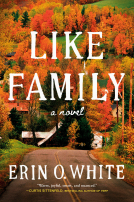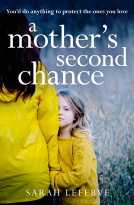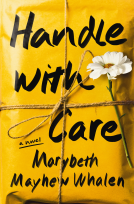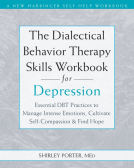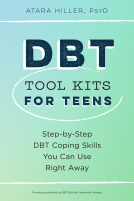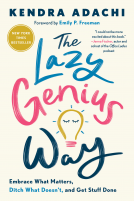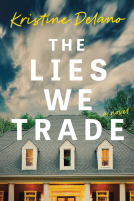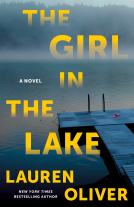
The Happiness Trap (Second Edition)
How to Stop Struggling and Start Living
by Russ Harris
This title was previously available on NetGalley and is now archived.
Send NetGalley books directly to your Kindle or Kindle app
1
To read on a Kindle or Kindle app, please add kindle@netgalley.com as an approved email address to receive files in your Amazon account. Click here for step-by-step instructions.
2
Also find your Kindle email address within your Amazon account, and enter it here.
Pub Date Jul 05 2022 | Archive Date Jul 05 2022
Shambhala Publications, Inc. | Shambhala
Talking about this book? Use #HappinessTrap #NetGalley. More hashtag tips!
Description
Over 1 million copies sold!
In The Happiness Trap, Dr. Russ Harris provides a means to escape the epidemic of stress, anxiety, and depression, unlocking the secrets to a truly fulfilling life.
Updated and expanded in its second edition, this empowering book presents the insights and techniques of Acceptance and Commitment Therapy (ACT), covering more topics and providing more practical tools than ever before. Learn how to clarify your values, develop self-compassion, and find true satisfaction with this bigger and better guide to:
• Reducing stress and worry
• Handling painful thoughts and feelings more effectively
• Breaking self-defeating habits
• Overcoming insecurity and self-doubt
• Building better relationships
• Improving performance and finding fulfilment at work
The Happiness Trap is for everyone. Whether you’re lacking confidence, facing illness, coping with loss, working in a high-stress job, or suffering from anxiety or depression, this book will show you how to build authentic happiness, from the inside out.
Available Editions
| EDITION | Other Format |
| ISBN | 9781645471165 |
| PRICE | $19.95 (USD) |
| PAGES | 240 |
Average rating from 5 members
Featured Reviews
I absolutely loved the original, recommended to me by my psychiatrist, but this update is fantastic! A wonderful mode of thinking about the world to trick your brain into a better stasis.
 Ashley P, Reviewer
Ashley P, Reviewer
I read the first edition of The Happiness Trap by Russ Harris a number of years ago and really liked it, so I was excited to read the new second edition. The book is based on acceptance commitment therapy (ACT), and the happiness trap refers to the reality that life is difficult, and if you try to have pleasant feelings all the time, you will fail.
Rather than trying to pursue happiness, the book focuses on creating a meaningful life based on your values. The author describes choice points at which we can decide to move away from or toward the life we want to live. We can unwittingly get pulled away from the life we want when we get “hooked” by difficult thoughts and feelings and go into either “OBEY” mode (doing what those thoughts/feelings urge us to do) or “STRUGGLE” mode. In STRUGGLE mode, we try to avoid or get rid of those difficult feelings, but in doing so, we only perpetuate those thoughts and feelings.
The author explains that thoughts, in and of themselves, aren’t harmful; the problem is when we get hooked by them. While CBT involves challenging negative thoughts and evaluating whether they’re true or not, from an ACT perspective, whether a thought is true or false isn’t important; what matters is whether or not a thought is helpful. The ACT perspective also acknowledges that we don’t have all that much control over what thoughts float into our heads, but we can recognize that thoughts are just stories that we don’t have to latch onto. The book sums up the ACT approach as “be present, open up, do what matters.”
Much of the book is devoted to various strategies that can help us to unhook from hard thoughts and feelings rather than obeying or struggling against them. A strategy that comes up repeatedly throughout the book is “dropping anchor”, which involves the acronym ACE: Acknowledge your thoughts and feelings, Connect with your body, and Engage in what you’re doing. Noticing and naming thoughts and feelings (“I’m having the thought that…”) is another key unhooking strategy.
Some of the unhooking strategies may sound familiar as mindfulness strategies, while others are more creative and playful, like musical thoughts (e.g. singing your negative thoughts to the tune of Happy Birthday) or replaying your self-judgments in silly voices. The author acknowledges that not all strategies are going to work for everyone, and if you try something and it doesn’t work out, try something else instead. I always like it when authors take this approach rather than assuming that everything they’re recommending is going to work for everyone.
There was a chapter on self-kindness/self-compassion, and I thought the author did a good job of addressing common misconceptions about self-compassion and arguments against it that our minds are likely to come up with. He offered this concise definition of self-compassion: “acknowledge your pain; respond with kindness.”
I liked his take on the comfort zone. He pointed out that the comfort zone usually isn’t comfortable at all; it’s more like the “misery zone”, the “stagnant zone”, or the “missing out on life zone”. Our minds may shout at us when we start doing something new, so instead of doing what matters, we may keep on doing the same things that are making us feel crappy.
I’m not particularly keen on affirmations, and neither is the author. He points out that just like a documentary about Africa isn’t Africa itself, mental story reels (be they negative or positive) aren’t you, and doing what matters based on your values will give you a deeper sense of self-worth than positive stories you try to convince yourself of.
The last part of the book focuses on how to create a more meaningful life. It addresses the difference between values and goals, the barriers that tend to get in the way of achieving goals, and strategies for changing bad habits. I liked the author’s point that we don’t have to wait for our mind’s “reason-giving machine” to either go silent or turn cheerleader before we start to make changes. In his book Collective Illusions, Todd Rose wrote about how most people’s private definition of success is different from the money and power definition we think everyone else has; in The Happiness Trap, Russ Harris suggests we redefine success as living by our values.
The book’s chapters are pretty short for the most part, which I always appreciate given my issues with concentration. While the author mentions more technical psychological terms like cognitive defusion and psychological flexibility, he stays away from jargon for the most part. I liked the trouble-shooting sections that addressed common difficulties people tend to have with the various strategies. I always appreciate when authors are willing to be vulnerable about their own struggles, and in this book, the author is open about the self-criticism and impostor syndrome that he’s struggled with.
I’m a big fan of ACT, and this book presents it in a very accessible way. If the CBT challenge-your-thoughts approach isn’t a good fit for you, ACT will probably feel like a refreshing antidote. If you’re not familiar at all with ACT, this book makes a great introduction. And if you’re like me and “be positive” just doesn’t float your boat, I think you’ll probably appreciate this book.
I received a reviewer copy from the publisher through Netgalley.

